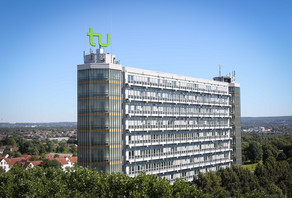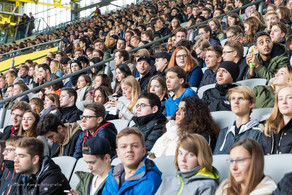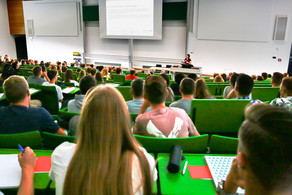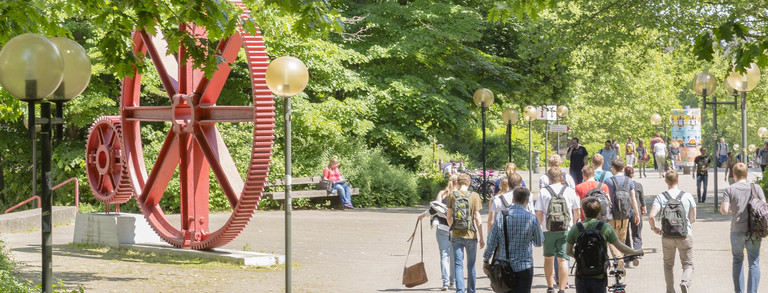Discussion papers SFB 823 in 2018
- 37/18: Kevin Leckey, Dennis Malcherczyk, Christine H. Müller
Generalized sign tests based on sign depth
- 36/18: Sascha Alexander Keweloh
A generalized method of moments estimator for structural vector autoregressions based on higher moments
- 35/18: Holger Dette, Kirsten Schorning, Maria Konstantinou
Optimal designs for series estimation in nonparametric regression with correlated data
- 34/18: Justin Chown, Nicolai Bissantz, Holger Dette
Goodness-of-fit testing the error distribution in multivariate indirect regression
- 33/18: Anne van Delft, Holger Dette
A similarity measure for second order properties of non-stationary functional time series with applications to clustering and testing
- 32/18: Claudio Durastanti, Tim Patschkowski
Aliasing effects for random fields over spheres of arbitrary dimension
- 31/18: Manuel Frondel, Marco Horvath, Colin Vance, Alexander Kihm
Increased market transparency in Germany's gasoline market: The death of rockets and feathers?
- 30/18: Nadja Malevich, Christine H. Müller, Michael Kansteiner, Dirk Biermann, Manuel Ferreira, Wolfgang Tillmann
Statistical analysis of the lifetime of diamond impregnated tools for core drilling of concrete
- 29/18: Sermad Abbas, Roland Fried, Jens Heinrich, Melanie Horn, Mirko Jakubzik,
Johanna Kohlenbach, Reinhard Maurer, Anne Michels, Christine H. Müller
Detection of anomalous sequences in crack data of a bridge monitoring
- 28/18: Holger Dette, Theresa Schüler, Mathias Vetter
Multiscale change point detection for dependent data
- 27/18: Martin Wagner, Karsten Reichold
Panel cointegrating polynomial regressions: Group-mean fully modified OLS estimation and inference
- 26/18: Rafael Weißbach, Lucas Radloff
Consistency for the negative binomial regression with fixed covariate
- 25/18: Axel Bücher, Peter N. Posch, Philipp Schmidtke
Using the extremal index for value-at-risk-backtesting
- 24/18: Stephan Sommer
Switching to green electricity: Spillover effects on household consumption
- 23/18: Mark Andor, Christopher Parmeter, Stephan Sommer
Combining uncertainty with uncertainty to get certainty? Efficiency analysis for regulation purposes
- 22/18: Robert M. de Jong, Martin Wagner
Panel cointegrating polynomial regression analysis and the environmental Kuznets curve
- 21/18: Holger Dette, Kevin Kokot, Stanislav Volgushev
Testing relevant hypothesis in functional time series via self-normalization
- 20/18: Nadja Malevich, Christine H. Müller
Optimal designs for inspection times of interval-censored data
- 19/18: Axel Bücher, Stanislav Volgushev, Nan Zou
On second order conditions in the multivariate block maxima and peak over threshold method
- 18/18: Oliver Stypka, Martin Wagner
The Phillips unit root tests for polynomials of integrated processes
- 17/18: Axel Bücher, Holger Dette, Florian Heinrichs
Detecting deviations from second-order stationarity in locally stationary functional time series
- 16/18: Manuel Frondel, Marco Horvath
The U. S. fracking boom: Impact on oil prices
- 15/18: Katharina Dyballa, Kornelius Kraft
Foreign competition and executive compensation in the manufacturing industry - A comparison between Germany and the U.S.
- 14/18: Kira Alhorn, Kirsten Schorning, Holger Dette
Optimal designs for frequentist model averaging
- 13/18: Manuel Frondel, Gerhard Kussel, Stephan Sommer
The price response of residential electricity demand in Germany: A dynamic approach
- 12/18: Maurice Hansen
On axiomizing and extending the quasi-arithmetic mean
- 11/18: Oleg Badunenko, Harald Tauchmann
Simar and Wilson two-stage efficiency analysis for Stata
- 10/18: Carina Gerstenberger
Robust discrimination between long-range dependence and a change in mean
- 9/18: Julia Reynolds, Leopold Sögner, Martin Wagner, Dominik Wied
Deviations from triangular arbitrage parity in foreign exchange and bitcoin markets
- 8/18: Joachim Kunert, Johanna Mielke
Efficient designs for the estimation of mixed and self carryover effects
- 7/18: Justin Chown, Cédric Heuchenne, Ingrid Van Keilegom
The nonparametric location-scale mixture cure model
- 6/18: Mark Andor, Manuel Frondel, Stephan Sommer
Equity and the willingness to pay for green electricity: Evidence from Germany
- 5/18: Pramita Bagchi, Subhra Sankar Dhar
A study on the least square estimator of multiple isotonic regression function
- 4/18: Michael Hoffmann
On detecting changes in the jumps of arbitrary size of a time-continuous stochastic process
- 3/18: Johanna Mielke, Joachim Kunert
Universally optimal crossover designs for the estimation of mixed-carryover effects with an application to biosimilar development
- 2/18: Holger Dette, Josua Gösmann
A likelihood ratio approach to sequential change point detection
- 1/18: Holger Dette, Weichi Wu
Change point analysis in non-stationary processes - a mass excess approach






